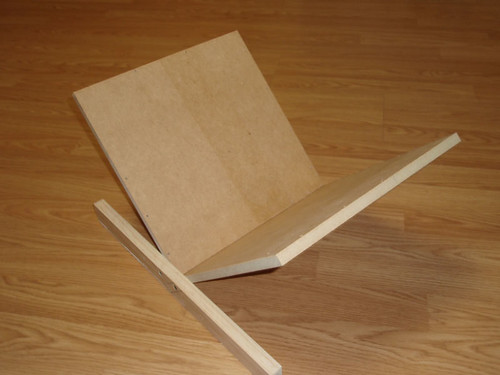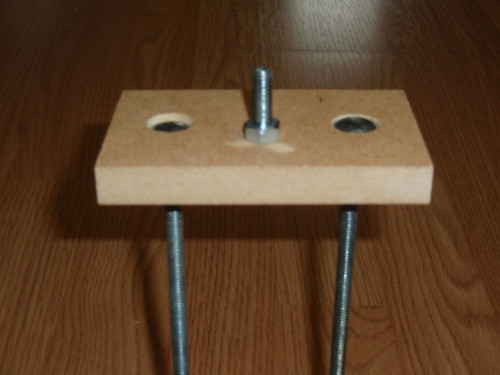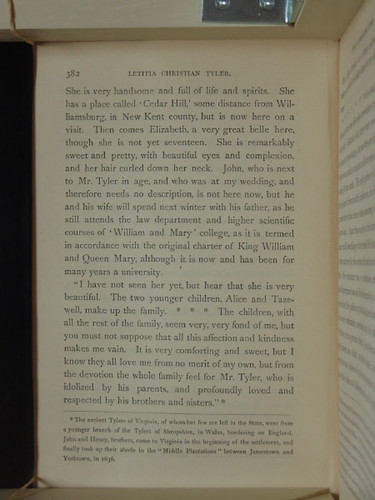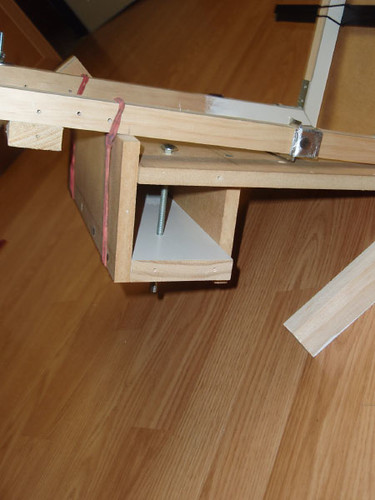First, the obligatory book stand - this is 2 12x12 inch pieces of MDF joined by screws, and a length of 1x2 furring strip for balance. I'm planning to eventually make this collapsible/foldable instead:

Next, the whole contraption ready to photograph a book:

To describe the pieces better - I have two "V" pieces made out of 1x1 pine - scrap I had laying around. These "V" pieces hold down the top and bottom edge of the book pages. On each end of one "V" are two lengths of 1x2 attached at a 90 degree angle, with about 3/8" gap between the two pieces. For added rigidity, these perpendicular pieces are held at a constant gap on the other end with another small block of wood. I'll call these perpendicular pieces the "wings" for lack of a better term.
The second "V" piece has a 1/4" carriage bolt through either end, matching up with the gap - wing nuts and washers on the bolts allow me to clamp this second "V" piece anywhere along the length of the "wings". So that provides a way to adjust the distance between the two "V" pieces to accommodate different sizes of books.
Then for a camera mount, here's the idea - two bolts going down, and a third coming up out of a block of wood - the camera screws directly into the bolt coming up, and the two descending bolts go through the gap on the wings -- so the camera can move horizontally anywhere along the wing, and if it needs to move vertically, this can be achieved by adding spacers between the block and the wing.

Finally, to hold the sides of the book pages down (I found this was necessary, especially on smaller books - otherwise they want to lift), I added a cross piece - in this case a thin metal strip that goes under the "V" pieces. This is attached by two rubber bands - allowing it to be repositioned as needed.
Here's one of the first photos I took, under normal indoor fluorescent lighting -- no additional lighting:

Turning pages seems pretty simple; the whole apparatus weighs about 3 pounds, so it can be lifted off easily. I may think about adding some sort of a handle just to make it a little more ergonomic.
I think my next attempt will be made with more standard dimensional wood, and I'll put it together a little more carefully -- but so far this seems to work very well for the purposes I want it for.
I'd love to hear any comments or questions about this approach.

